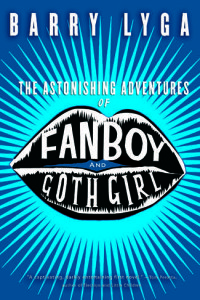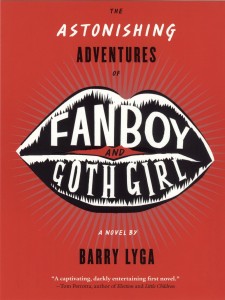One of the questions I am asked most often is, “Where did you get the idea for this book?” Or, sometimes, “What was your inspiration?” I mean, I get this all the time.
So I figured I would start up a series here called “How It Happened,” stepping through my career book-by-book — in publication order — to answer precisely that question!
I had written a bunch of stuff. None of it what you might call “successful.”
The year was 2004. I’d published a very small handful of short stories, and some comic books that were — how shall we put it? — not well received. I had also written two novels, neither of which were inducing editors or agents to fall all over themselves while running in my direction. Still, those two novels were getting a better class of rejection from the usual suspects.
One editor read the most recent of those novels and said (paraphrasing), “You’re close. Not this one. Show me your next one.”
I didn’t know what my “next one” would be, though. I was burned out and more than a little depressed, in my thirties and seemingly no closer to success than when I’d sent off my first short story at the age of twelve.
At the time, I was in a local writers group. We got together once a month and critiqued each other’s stuff. In the group were three published authors, so I benefitted from their experience and wisdom.
One thing they asked me about those two novels was this: How old are the characters? I never stated it explicitly.
I figured them all to be in their mid-twenties. Why?
Well, they told me, it’s just that… The characters spoke and acted younger than that. They seemed like teenagers. Had I considered that maybe I had a knack for writing teens? Had I considered writing YA?
Now, realize that this was in 2004, before the YA explosion (right on the cusp of it, really). Consider, too, that I grew up in the 1980s, a time when books for teens were, well, terrible. With the exception of a few folks like Judy Blume, most books aimed at teens when I was a teen were awful, written to moralize, written to be safe. They were crap.
So when told to consider writing YA, my first instinct was to recoil. And, quite truthfully, I was a bit insulted.
By sheer coincidence, though, around the same time, a friend handed me a copy of Mariah Fredericks’ The True Meaning of Cleavage. 1 It was a great book, lots of fun, and well written. I remember this thought flitting through my head as I read it: Oh. You’re allowed to write good books for teens now!
Mariah did a lot right with that book, but for me, she did two things that were critically important. First of all, she used a writerly gimmick that I’ve always loved (and had used many times in my own short stories): She started and ended the story with the same sentence. Second of all, her characters liked science fiction.
This made me think of my own misspent youth, my obsession with comic books, and my urgent need to create them. (Check out the Stories I Never Told series on this site to see some of those stories.)
And, truly, the entire story of Fanboy popped into my head at once.
Whereas with those other two novels I had had to force myself to write, with this new one, it just flowed out of me. The problem wasn’t pulling the words out — the problem was keeping up with them! I couldn’t type fast enough. Even as I was writing one chapter, another one a hundred pages away would present itself in my mind, and I was jumping all over the place, just trying to get everything committed to pixels before it left me.
I knew after about three pages of writing that This Was The One. This was the novel that would get me published.
To write the book, I drew on my own childhood — lonely and bullied, desperate to escape a small town that offered precisely zero, enamored of a career and a lifestyle that no one in my circle and no one in their circles could even imagine…so it might as well not exist. It was a time of unapologetic revenge fantasies and pointless lusting after impossible dream girls.
But I realized early on that the book would carry the strange savor of history if I set it during my own childhood in the 1980s. So I updated it to the Turn of the Millennium. My own obsession with Paul Levitz’s Legion of Super-Heroes comics became Fanboy’s obsession with Brian Michael Bendis. My desire for a copy of Adventure Comics #247 and an Apple II computer became Giant-Size X-Men #1 and a new Mac. (Hey, some things stay the same!) And so on.
His urge to create something great and get the hell out of Dodge, though, was precisely the same as mine. No need to change a thing.
And one more thing. An element of wish-fulfillment.
Goth Girl. All at once the friend I wished I’d had and the gadfly I’d so desperately needed at that age.
When I signed on with my agent, the only comment she had on the book was “More Goth Girl, please.” And she was right. In the original draft, after Kyra and Fanboy fight in his bedroom, she disappears from the novel until the very end. Thanks to my agent’s prodding, I came up with the scene at the comic book convention, the one where she famously flashes Bendis. I imagine my thought process was something like this: “You want more Goth Girl? I’ll show you more Goth Girl!”
And then she went out and sold the book…and the rest is history!
P.S. A few years ago, I was fortunate enough to be on a panel with Mariah and got to tell her — at last — that she’d indirectly inspired me to write YA. Luckily, she didn’t groan and bemoan what she’d done. 🙂



